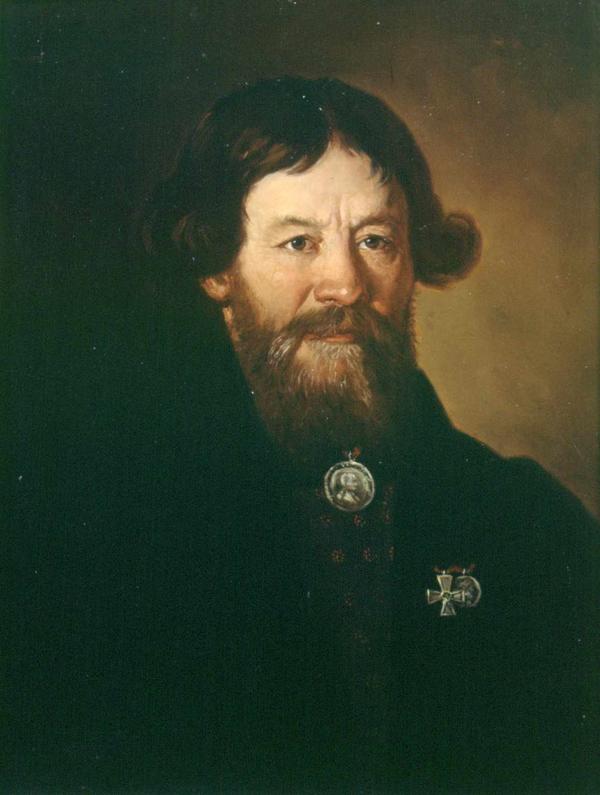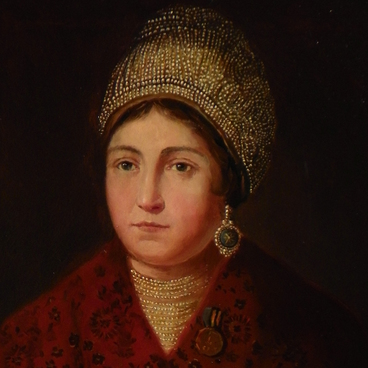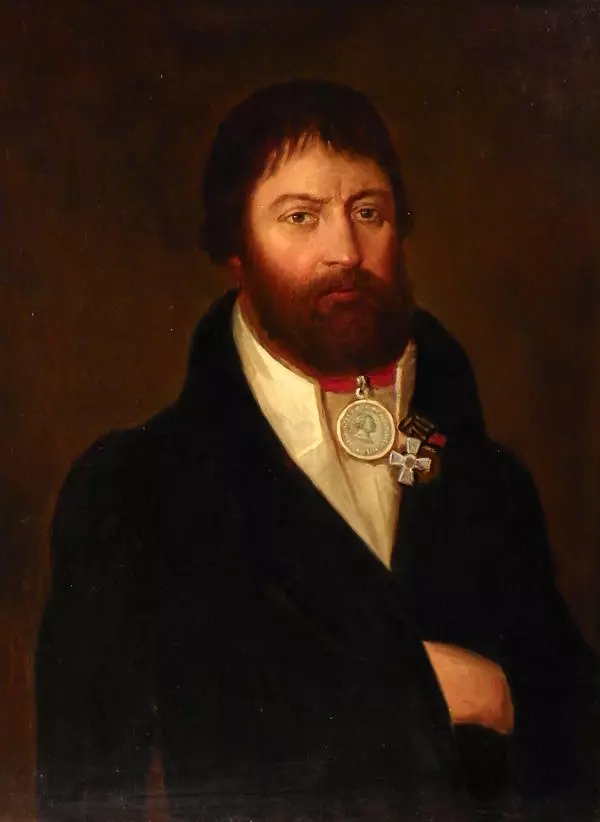Yegor Stulov — district elder of the Vokhonsky Volost of the Bogorodsky Uyezd of the Moscow Governorate, leader of the partisan movement. In the autumn of 1812, when the French began to approach Bogorodsk (modern Noginsk), the 37-year-old Stulov went with his fellow villagers in the woods and organized a squad to fight the enemy.
The peasants had several horses, so their actions turned out to be very effective. The squad covertly attacked small consignments of French foragers, who tried to obtain food in the surrounding villages, and then it hastily hid in the woods. The squad quickly armed and reached a strength of approximately 500 people. Soon, Stulov with his men joined the squad of another partisan, Gerasim Kurin.
In less than two weeks, Stulov’s party took part in seven firefights with the enemy. Together with Kurin’s unit, he actually blocked the Vladimir Highway, so that Marshal Ney’s corps, which occupied Bogorodsk, could not move beyond. As witness of the war and historian Alexander Mikhaylovsky-Danilevsky wrote, the partisans laid “the extreme line in the east to which Napoleon”s invasion of Russia extended”.
Stulov also participated in the defeat of a small reconnaissance detachment of the French in the village of Bolshoy Dvor, then defeated three enemy squadrons in the village of Subbotino, expelled the French from the village of Nazarovo.
On October 1, the parties of Stulov and Kurin successfully attacked the enemy at the village of Gribovo and the village of Pavlovo. Chasing the retreating French, the peasants broke into Gribovo, where the enemy’s main forces stood, but got caught in the crossfire. The partisans retreated to the Yudinsky ravine, in which up to a thousand armed peasants were already hiding in ambush. At the critical moment of the battle, they struck the enemy at the flank and put it to flight. The next day, the partisans occupied Bogorodsk, abandoned by the French.
After the 1812 war, for his courage and valor, Stulov was awarded the Decoration of the Military Order of Saint George and introduced into the estate of distinguished citizens — a particularly privileged group of the so-called estate of urban dwellers.
The fact that Stulov sat for a portrait also confirms the recognition of his merits in the fight against the French invaders. This portrait was painted in 1959 specifically for the exposition of the Museum- Panorama ‘Battle of Borodino’ after the 1813 original, which is kept in the State Historical Museum.
The peasants had several horses, so their actions turned out to be very effective. The squad covertly attacked small consignments of French foragers, who tried to obtain food in the surrounding villages, and then it hastily hid in the woods. The squad quickly armed and reached a strength of approximately 500 people. Soon, Stulov with his men joined the squad of another partisan, Gerasim Kurin.
In less than two weeks, Stulov’s party took part in seven firefights with the enemy. Together with Kurin’s unit, he actually blocked the Vladimir Highway, so that Marshal Ney’s corps, which occupied Bogorodsk, could not move beyond. As witness of the war and historian Alexander Mikhaylovsky-Danilevsky wrote, the partisans laid “the extreme line in the east to which Napoleon”s invasion of Russia extended”.
Stulov also participated in the defeat of a small reconnaissance detachment of the French in the village of Bolshoy Dvor, then defeated three enemy squadrons in the village of Subbotino, expelled the French from the village of Nazarovo.
On October 1, the parties of Stulov and Kurin successfully attacked the enemy at the village of Gribovo and the village of Pavlovo. Chasing the retreating French, the peasants broke into Gribovo, where the enemy’s main forces stood, but got caught in the crossfire. The partisans retreated to the Yudinsky ravine, in which up to a thousand armed peasants were already hiding in ambush. At the critical moment of the battle, they struck the enemy at the flank and put it to flight. The next day, the partisans occupied Bogorodsk, abandoned by the French.
After the 1812 war, for his courage and valor, Stulov was awarded the Decoration of the Military Order of Saint George and introduced into the estate of distinguished citizens — a particularly privileged group of the so-called estate of urban dwellers.
The fact that Stulov sat for a portrait also confirms the recognition of his merits in the fight against the French invaders. This portrait was painted in 1959 specifically for the exposition of the Museum- Panorama ‘Battle of Borodino’ after the 1813 original, which is kept in the State Historical Museum.






